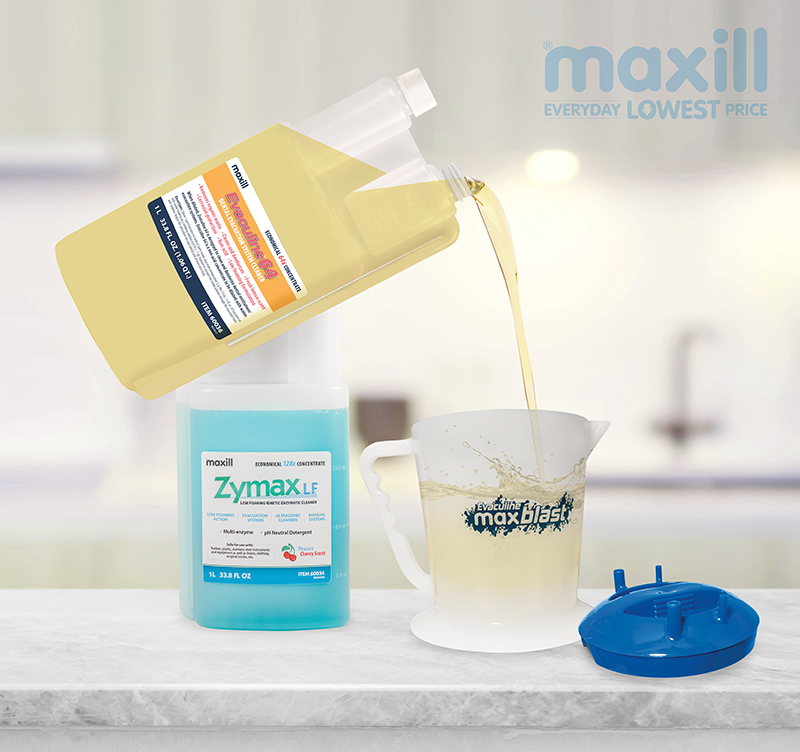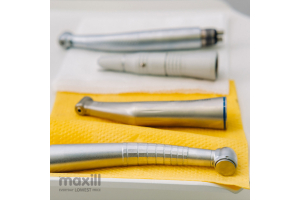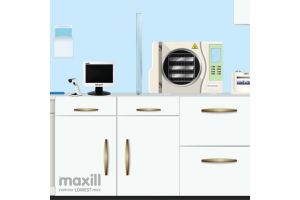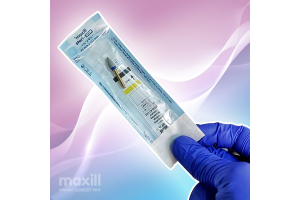Preventing The Spread of Germs: Disinfectants Used in The Dental Office

What are the different types of cleaners used in dentistry?
In the dental office, multiple cleaners are used to keep the office free of harmful germs. These cleaners are referred to as disinfectants and are applied to contaminated surfaces to kill the pathogens present. They are available in the form of sprays, wipes, and solutions.
Types of Disinfectants
The process of disinfecting is a two-step procedure. First, the surface must be cleaned to ensure all blood, debris, and waste is removed. Second, the surface is disinfected by applying a disinfectant and letting the chemicals activate for the noted contact time to kill all bacteria, viruses and possible fungi present.
Disinfectants are separated into three different categories:
- Low-Level Disinfectants
- Intermediate-Level Disinfectants
- High-Level Disinfectants
The most common chemicals used in disinfectants are alcohols, glutaraldehyde, hydrogen peroxide, ortho-phthalaldehyde, ammonium chloride, oxidizers, formaldehyde, and phenolics. Disinfectants should only be applied to the areas and equipment for which it is labeled.
Low-Level Disinfectants
- Alcohol wipes
- Used as a special direction from manufacturers of non-heat tolerable equipment that cannot be sterilized and reacts poorly with chemicals (example the lens of an intra-oral camera)
Looking for more information on IPAC (Infection Control and Prevention) Resources? Here's a link to our extensive list of PDF checklists and informational articles!
Intermediate-Level Disinfectants
- Hard surface disinfectant spray and disinfectant wipes
- Used on operatory room equipment and hard surfaces.
- Used in reception area for patient seating and doorknobs.
- Used in reception are for administrative shared items (example: telephone, debit machine, and any high touch areas)
- Non-critical equipment (Blood pressure cuff, x-ray cone head, etc.)
High-Level Disinfectants
- No longer a best practice directive in dentistry
- If used must be tested with an efficacy chemical test
- Cold Sterile Soaking Solutions
- Only used on heat-sensitive items
- Semi-critical and critical equipment
In place of high-level disinfectants, it is recommended that non heat-sensitive dental supplies be cleaned with an enzymatic cleaner to remove dried blood and debris. Then, dried and sterilized in an autoclave sterilizer to kill all living microorganisms.
How Often Should a Dental Office Be Cleaned?
Developing a routine for cleaning the dental office will keep the office compliant with all infection control guidelines. Delegating tasks among staff and logging everything on a spreadsheet will ensure an organized process to maintain cleanliness in the dental office.
- The reception area, offices, and bathrooms are be tidied up throughout the day. At the end of each day, all surfaces are to be cleaned and disinfected, floors mopped with a microfiber mop head, and trash cans emptied.
- All operatories must be disinfected between each patient. The dental instruments that are contaminated during procedures are taken directly to the sterilization room. The water and air lines of the dental units must be purged at the beginning of the day and between each patient to flush debris that may have entered. In addition, a waterline disinfectant is used to remove bacteria-ridden biofilm, the frequency is based on the manufacturer guidelines of each dental unit.
- All other areas of office require a schedule for cleaning. Think about these areas like spring cleaning. This includes walls, baseboards, ceiling vents, etc.
It must be stated any area must be cleaned when visibly soiled rather than waiting for the area’s set schedule for cleaning. It is everyone’s responsibility on the team to keep the dental office clean.
maxill.com is a dental supply company that manufactures a variety of dental supplies, including cleaners, shipped right to your dental office.
Ensure Patient and Staff Safety by Keeping The Dental Office Clean!
Conclusion
In the realm of dentistry, the battle against harmful pathogens relies on a spectrum of disinfectants tailored to specific needs. Divided into Low-Level, Intermediate-Level, and High-Level categories, these cleaners serve crucial roles, from delicate equipment care to powerful surface disinfection. While High-Level disinfectants have given way to safer alternatives like enzymatic cleaners and autoclave sterilization, maintaining a pristine dental office demands a rigorous routine. From routine tidying to thorough disinfection between patients, the teams shared responsibility ensures compliance with regulatory infection control guidelines. maxill offers an array of essential dental supplies, contributing to the mission of a safe environment for both patients and dental office personnel. Ultimately, beyond just appearances, a clean dental office assures the well-being of everyone within its walls, making it a sanctum where health thrives and smiles stay protected.
Article Content References
- “Recommendations.” Centers for Disease Control and Prevention, Centers for Disease Control and Prevention, 24 May 2019, https://www.cdc.gov/infectioncontrol/guidelines/disinfection/recommendations.html.
- “Sterilants and Disinfectants.” Healthcare Environmental Resource Center (HERC), https://www.hercenter.org/dental/sterilants.htm#:~:text=Some%20common%20chemical%20sterilants%20and,bleach)%2C%20formaldehyde%20and%20phenolics.
- Center for Devices and Radiological Health. “Dental Unit Waterlines.” U.S. Food and Drug Administration, FDA, https://www.fda.gov/medical-devices/dental-devices/dental-unit-waterlines.
- “Dental Unit Water Quality.” Centers for Disease Control and Prevention, Centers for Disease Control and Prevention, 25 Mar. 2016, https://www.cdc.gov/oralhealth/infectioncontrol/faqs/dental-unit-water-quality.html.
- Alcohol Wipes – Maxill https://www.maxill.com/ca/our-products/infection-control/cleaners/mycolio-lite-alcohol-wipes.html
- Hard Surface Disinfectant – Maxill https://www.maxill.com/ca/our-products/infection-control/cleaners/tb-minuteman-hard-surface-disinfectant.html
- Waterline Disinfectant – Maxill
- https://www.maxill.com/ca/our-products/infection-control/disinfectants/aqua-fx-waterline-disinfectant-kit.html
- Enzymatic Cleaner – Maxill https://www.maxill.com/ca/zymax-lf-low-foaming-kinetic-enzymatic-cleaner.html
Articles Related to Topic
- https://www.crosstexbms.com/education/products/high-level-disinfection/
- https://www.nobledentalsupplies.com/a-guide-to-dental-disinfectants-and-sterilants
- https://tdaperks.com/disinfectionsterilization/
- https://www.aegisdentalnetwork.com/ida/2013/06/q-a-all-about-surface-disinfectants-in-the-dental-office
- https://www.dentistrytoday.com/best-practices-for-stopping-the-spread-of-infections-in-dental-settings/
- https://www.rdhmag.com/patient-care/implant-maintenance/article/16406395/cold-sterile








